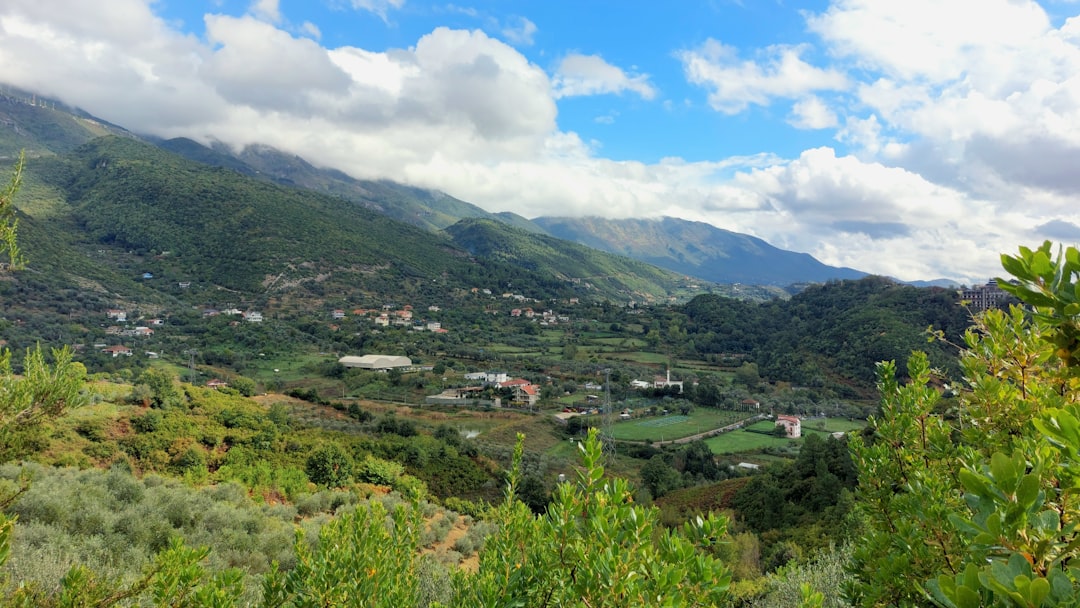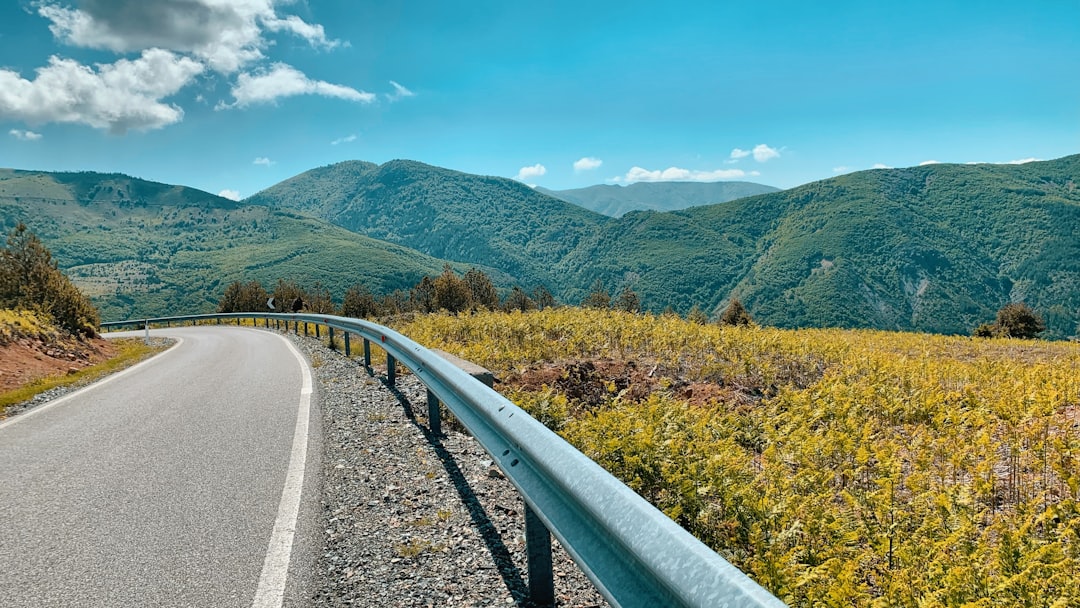Seven Days Car Free in Albania What the Selfies Dont Show
Seven Days Car Free in Albania What the Selfies Dont Show - Navigating Without Wheels The Unfiltered Journey
Shifting perspective slightly, 'Navigating Without Wheels: The Unfiltered Journey' specifically zeroes in on the practical, sometimes messy reality of traversing landscapes without a personal vehicle, a side rarely captured in picture-perfect travel squares.
Examining the interface between physical journeying and digital representation yields several insights regarding car-free navigation and the disjunct between lived experience and curated online narratives:
1. Investigations into human attention and memory encoding during activity suggest that the act of focusing visual attention to capture an image can sometimes lead to diminished recall for contextual details within the scene that were not central to the photographic frame, effectively biasing memory towards the recorded data points rather than the holistic moment.
2. Analysis of user engagement patterns on social media platforms indicates a correlation between frequent exposure to highly edited travel self-portraits and elevated markers of social comparison and reduced self-worth in viewers, pointing to the psychological effects of encountering seemingly effortless presentations of peak experiences removed from their actual complexities.
3. Cognitive studies on environmental processing under different locomotion modes suggest that travel without the contained perspective of a vehicle encourages heightened sensitivity to immediate sensory inputs like ambient sounds, localized scents, and the tactile interaction with terrain, fostering a different form of memory structure rooted in closer engagement with the physical surroundings compared to faster, more visually mediated movement.
4. Evaluation of image capture geometry confirms that the typical close-range use of wide-angle lenses on mobile devices for selfies introduces predictable perspective distortions, subtly altering the perceived symmetry and proportions of facial features in ways that differ from how those features are perceived by observers in person or in images captured from standard portrait distances.
5. Research within behavioral economics and psychology proposes that experiences demanding significant physical or cognitive effort, such as navigating complex or unfamiliar environments without private transport, are often subjectively evaluated as more meaningful and profoundly rewarding in retrospect, notwithstanding any immediate feelings of frustration or exertion encountered during the process, a nuanced outcome that is inherently difficult to encapsulate within a single aesthetically pleasing photograph intended for rapid social media consumption.
Seven Days Car Free in Albania What the Selfies Dont Show - Beyond the Beach Club Frame The Real Daily Steps
Moving past the carefully crafted online image, focusing on the reality behind the travelogue's glossy façade reveals the true nature of a trip in its daily progression. The ubiquitous social media snapshot, particularly the popular selfie often placed against a conventionally attractive backdrop, tends to present a simplified, even misleading, version of the actual journey. It sidesteps the mundane, the difficult moments, and the simple interactions that form the fabric of genuine experience. Embracing these unfiltered, unphotographed steps – the wrong turns, the chance conversations, the quiet observations between curated stops – unlocks a more profound connection to a place and its people. These countless small moments, far from the posed photo, hold the actual narrative richness that transcends the brief visual statement of a perfected online post, shaping a more authentic understanding of the adventure.
Delving into the quantifiable aspects of the journey beyond the frame offers a look at some less visible parameters of experience. Analysis of human kinetic systems under load indicates that transporting even a moderate daily pack load, typically 5-10 kilograms, can require a metabolic energy output increase ranging from 15% to 30% when compared to movement without such a burden, representing a considerable increase in physical work over a sustained period navigating varied terrain. Further observation into the operational workflow behind crafted online portrayals suggests that the cumulative time investment in pre-visualization, image capture, post-processing adjustments, and dissemination across platforms can aggregate to a significant labor expenditure, often calculated in the range of four to eight hours per day for individuals prioritizing a polished digital feed, highlighting the substantial processing overhead not immediately apparent in the final visual output. From a cognitive systems perspective, ongoing interaction with external digital navigation tools during pedestrian transit through unfamiliar areas appears correlated with potentially reduced encoding of spatial information into internal memory structures, perhaps impacting the autonomous recall and mental mapping capabilities relative to engaging solely with ambient environmental cues. Investigating the biomechanics of image production reveals that the static muscular effort required to maintain specific postures and facial configurations for photographic purposes involves physiological dynamics distinct from, and potentially adding localized fatigue beyond, the dynamic energy demands of continuous walking or active exploration. Finally, data gathered from direct sensory input during extensive on-foot exploration across diverse environments often reveals the unfiltered state of local conditions, including details such as environmental detritus presence or the tangible condition of infrastructure elements, data points frequently subject to selective framing or intentional exclusion within idealized visual narratives constructed for rapid social media dissemination.
Seven Days Car Free in Albania What the Selfies Dont Show - The Logistics Lag What the Feed Leaves Out
The section "The Logistics Lag: What the Feed Leaves Out" shifts the focus to the substantial, often invisible efforts that underpin travel, especially when foregoing personal transport. Behind the effortlessly aesthetic imagery populating social feeds lies a different narrative: the reality of navigating unfamiliar territory, managing practical necessities away from easy access, and the sheer physical and mental labour involved in moving oneself and one's belongings across distances. The gap between the idealized moments shared and the day-to-day grind of logistics, the moments of uncertainty, the unexpected detours, or the simple fatigue from continuous movement, is vast. What appears as seamless exploration online often demands considerable behind-the-scenes coordination and resilience. Recognizing this significant, unphotographed layer of the journey reveals a more complete picture of travel's true demands and rewards, suggesting that the real adventure often resides in overcoming these unglamorous challenges, rather than solely in the picture-perfect scene.
Delving deeper than the readily available visual output, the operational underside of maintaining a prolific digital presence while navigating physical space introduces a layer of logistical complexity often abstracted away in the final feed.
The computational load associated with acquiring high-fidelity visual data (high-resolution images and video streams) imposes a non-trivial load on mobile device energy reserves, leading to accelerated battery consumption rates considerably higher than general usage. This operational characteristic necessitates continuous monitoring of power status and the implementation of logistical strategies for frequent power replenishment across varied and potentially infrastructure-sparse locations.
Accumulating large volumes of visual assets from extended data acquisition periods generates substantial storage demands. Managing these requirements mandates consistent execution of data transfer procedures, either to local external storage units or remote cloud repositories, to mitigate the risk of onboard storage saturation, which could impede further capture operations.
Achieving desired photographic compositions, particularly those requiring the absence of other human elements in popular sites, frequently requires significant allocation of temporal resources in the form of waiting periods. This non-productive operational time represents an often-underestimated cost factor in content production workflows, directly impacting the overall efficiency metrics of the travel itinerary as a whole.
Maintaining the functional integrity of sophisticated electronic imaging and communication apparatus while traversing diverse and potentially harsh environmental conditions (e.g., high particulate matter density, fluctuating humidity levels, thermal extremes) introduces a persistent requirement for protective measures. This forms a less visible, yet crucial, layer of logistical management for ensuring operational continuity.
The strategic objective of securing particular visual outcomes often acts as a primary driver in the route planning and temporal sequencing of a journey. This can lead to deviations from paths optimized for minimal distance or time, favoring instead locations chosen based on aesthetic potential but potentially requiring more complex transit methodologies or representing logistical detours from a purely navigational efficiency perspective.
Seven Days Car Free in Albania What the Selfies Dont Show - Capturing the Moment vs Experiencing the Place
In the contemporary landscape of exploration, a central paradox often emerges: the urge to meticulously record a journey competes directly with the simple act of living through it. With advanced imaging tools readily accessible, the impulse to 'get the shot' for posterity, or perhaps for an anticipated audience, can subtly reshape how we interact with a new environment. Does the pursuit of the perfect frame pull us out of the immediate sensory world? It's a tension felt acutely, perhaps more so when the physical journey demands focused presence, pushing back against the digital mediation that can create distance from the very place we've travelled to encounter.
Moving beyond the immediate visual presentation, analysis into the cognitive and systemic aspects of mediated travel experiences reveals several interesting observations regarding the interface between presence and digital representation.
Analysis of cognitive processes during perception reveals that the state of readiness for image capture can trigger a shift in how the brain prioritizes sensory input, moving from a broad, immersive awareness towards a more focused, selective filtering of visual data calibrated for the composition within the intended frame, potentially limiting the depth of simultaneous engagement with the surrounding sensory field.
Neuroscientific investigations, utilizing techniques like fMRI, have established correlations between the processing of self-referential visual data, such as self-portraits, and activation in cerebral areas associated with intrinsic reward mechanisms and the processing of social cues. This suggests a foundational neurological linkage underpinning the motivation behind self-image capture and dissemination within social networks, potentially operating independently of external social comparison dynamics.
Observation of collective traveler behavior patterns reveals that convergence driven by the pursuit of replicating specific widely circulated visual exemplars can induce localized concentrations of physical activity at sensitive points within an ecosystem or urban structure. This aggregation effect contributes measurably to increased wear on physical infrastructure and localized disruption of natural processes beyond the baseline environmental impact of dispersed transit.
Examination of the metadata layer embedded within standard digital photographic outputs confirms the automatic recording of precise spatial (geographic coordinates) and temporal data points associated with each capture event. This silent, cumulative data stream constitutes a comprehensive, though often unexamined, log detailing the precise trajectory and duration of the recording agent's physical presence across a landscape at a resolution frequently exceeding that retained in conscious memory.
Studies analyzing attention mechanisms in contexts mediated by screen interfaces indicate that viewing environmental inputs exclusively through the bounded visual field of a camera or phone display can promote a state of 'attentional narrowing.' This cognitive phenomenon directs processing resources predominantly towards the framed visual feed, potentially suppressing the concurrent registration and processing of auditory, olfactory, or tactile information present in the surrounding environment, thus segmenting the overall sensory experience.
More Posts from itraveledthere.io:
- →Stunning Solo Travel Selfies Practical Tips for Online Profiles
- →Affordable Swiss Selfies Achieving Quality Without Expense
- →Youth Travel Selfies The AI Authenticity Debate
- →Sarajevo Adventures Or AI Doubles The New Dating Profile Reality
- →True Travel Stories Beyond Influencer Poses
- →Trending Midwestern City Offers Epic Selfie Spots

